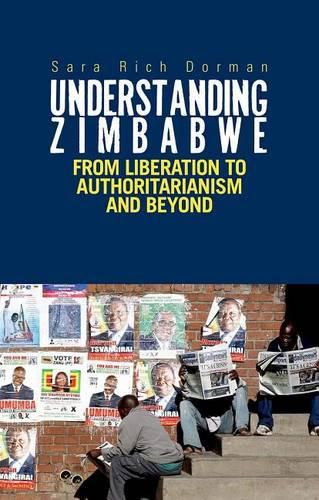Readings Newsletter
Become a Readings Member to make your shopping experience even easier.
Sign in or sign up for free!
You’re not far away from qualifying for FREE standard shipping within Australia
You’ve qualified for FREE standard shipping within Australia
The cart is loading…






Zimbabwe’s recent history has been shaped by battles about who speaks for the nation, fought out in struggles for control of political institutions, the media, and civil society. In her book Sara Rich Dorman examines the interactions of social groups - churches, NGOs, and political parties - from the liberation struggle, through the independence decades, as they engaged the state and ruling party. Her empirically rich account reveals how strategies of control and co-option were replicated and resisted, shaping expectations and behavior. Dorman tracks how the relationship between Mugabe’s ruling party and activists was determined by the liberation struggle, explaining how electoral machinery, the judiciary, and other institutions of state control ensured ZANU-PF hegemony, even as other forces in Zimbabwean society demanded accountability and representation.
This is a story of ambiguity and complexity in which the state and civil society mimic and learn from each other. We learn how both structural and direct violence are deployed by the regime, but also how ad-hoc and unplanned many of their interventions really were. Even as the liberation war generation reluctantly exits the Zimbabwean political stage, their influence continues to shape interaction between citizens and the state.
$9.00 standard shipping within Australia
FREE standard shipping within Australia for orders over $100.00
Express & International shipping calculated at checkout
Zimbabwe’s recent history has been shaped by battles about who speaks for the nation, fought out in struggles for control of political institutions, the media, and civil society. In her book Sara Rich Dorman examines the interactions of social groups - churches, NGOs, and political parties - from the liberation struggle, through the independence decades, as they engaged the state and ruling party. Her empirically rich account reveals how strategies of control and co-option were replicated and resisted, shaping expectations and behavior. Dorman tracks how the relationship between Mugabe’s ruling party and activists was determined by the liberation struggle, explaining how electoral machinery, the judiciary, and other institutions of state control ensured ZANU-PF hegemony, even as other forces in Zimbabwean society demanded accountability and representation.
This is a story of ambiguity and complexity in which the state and civil society mimic and learn from each other. We learn how both structural and direct violence are deployed by the regime, but also how ad-hoc and unplanned many of their interventions really were. Even as the liberation war generation reluctantly exits the Zimbabwean political stage, their influence continues to shape interaction between citizens and the state.